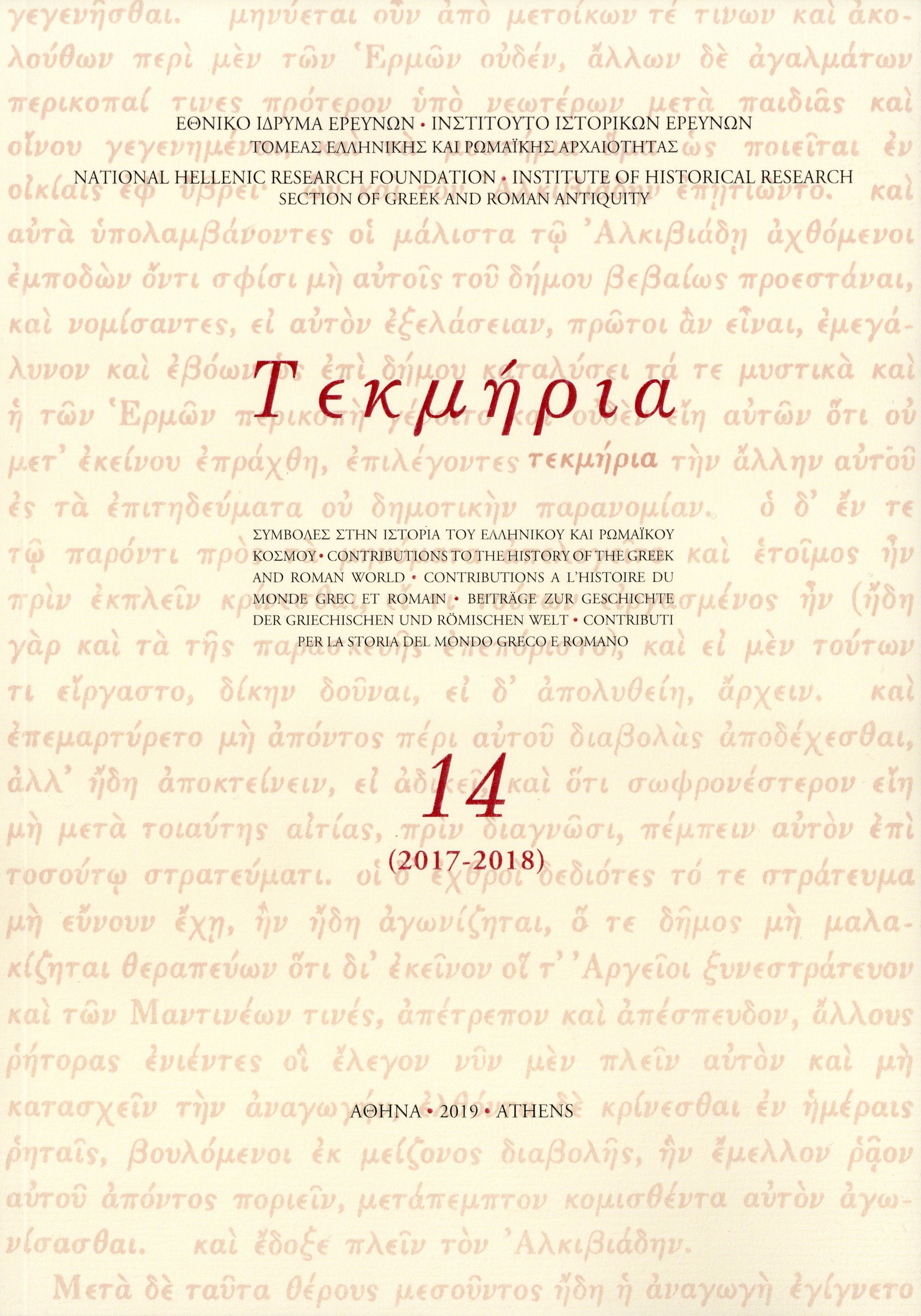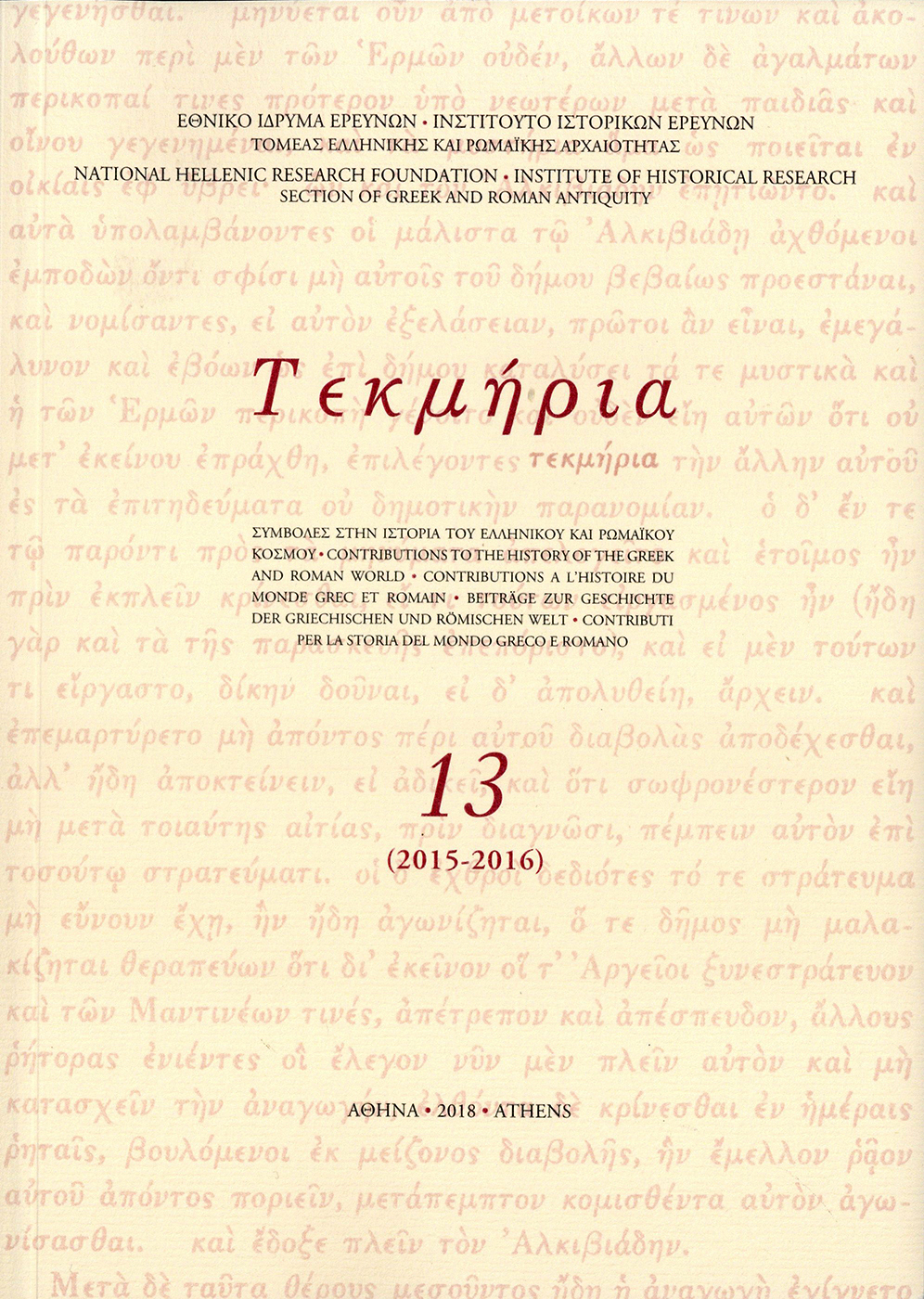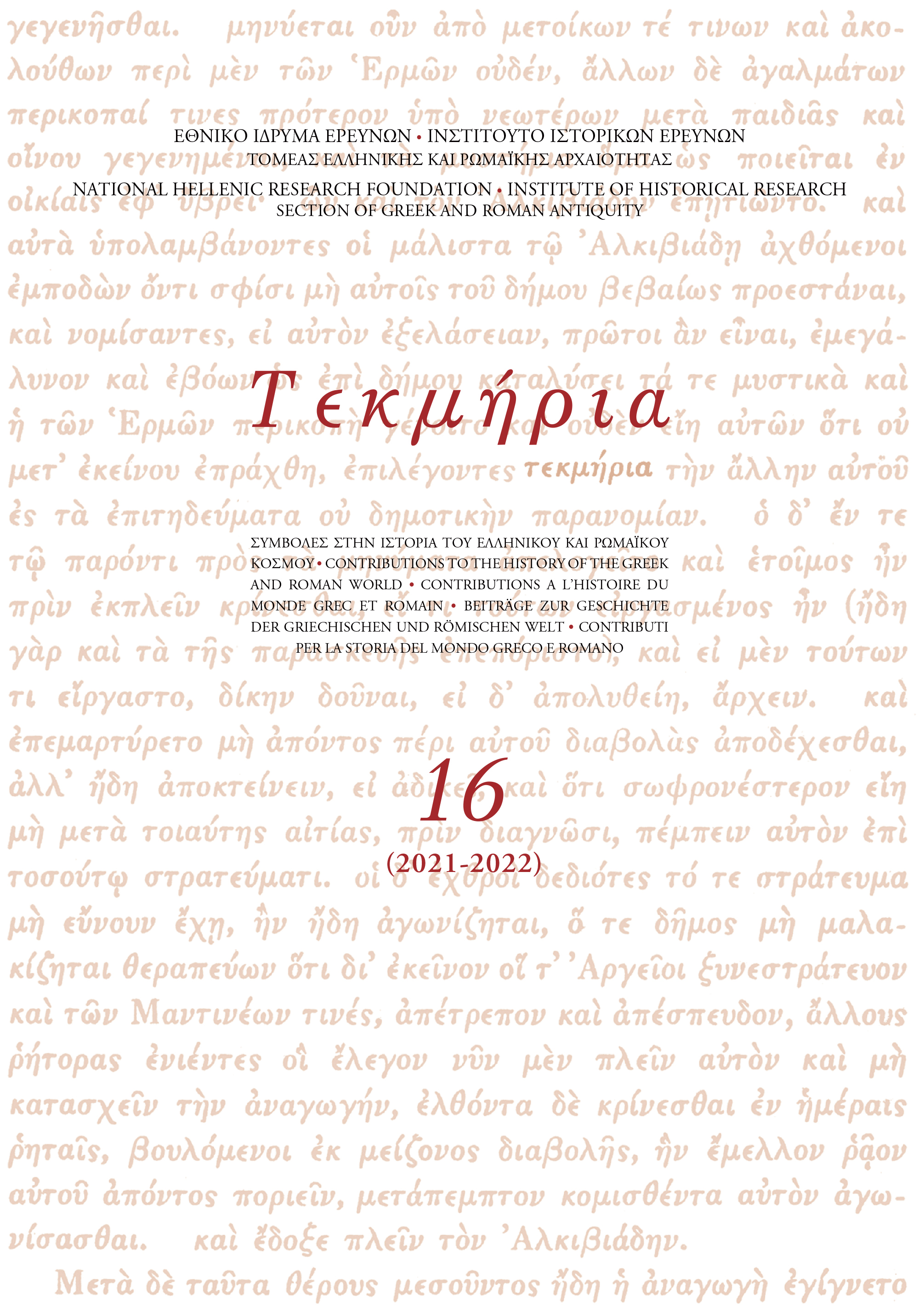A Roman financier's Version of Euergetism: C. Vibius Salutaris and Ephesos
Περίληψη
Based on a close study of the text of the epigraphic dossier IEph 1a 27, dated 104 CE, that once covered an entire wall at Ephesos’ theatre and is now in the British Museum and, in addition, on the evidence of other inscriptions relating to C. Vibius Salutaris, this paper argues that: contrary to a widely held view, Salutaris was not an Ephesian by birth; that the terms of his foundation gave him absolute control over the foundation’s capital; that the objects donated and the rituals in which they featured were so designed as to bestow disproportionately great honor on the founder. Salutaris’ interpretation of euergetism was unconventional and his gifts to Ephesos would most likely have sunk in oblivion, were it not for his connections to representatives of the Roman state, and, most importantly, for his foundation’s successful advertising of Ephesos’ attachment to Rome.
Λεπτομέρειες άρθρου
- Πώς να δημιουργήσετε Αναφορές
-
Kokkinia, C. (2019). A Roman financier’s Version of Euergetism: C. Vibius Salutaris and Ephesos. Τεκμήρια, 14, 215–252. https://doi.org/10.12681/tekmeria.17405
- Τεύχος
- Τόμ. 14: (2017-2018)
- Ενότητα
- Άρθρα

Αυτή η εργασία είναι αδειοδοτημένη υπό το CC Αναφορά Δημιουργού – Μη Εμπορική Χρήση – Παρόμοια Διανομή 4.0.
Οι συγγραφείς των άρθρων που δημοσιεύονται στα Τεκμήρια διατηρούν τα δικαιώματα πνευματικής ιδιοκτησίας επί των άρθρων τους, παραχωρώντας στο περιοδικό το δικαίωμα της πρώτης δημοσίευσης. Άρθρα που δημοσιεύονται στα Τεκμήρια μπορούν να χρησιμοποιούνται ελεύθερα για μη κερδοσκοπικούς σκοπούς, χωρίς δικαίωμα τροποποίησης (δημιουργία παράγωγου έργου), με αναφορά στο συγγραφέα και στην πρώτη δημοσίευση. Το Εθνικό Ίδρυμα Ερευνών διατηρεί το δικαίωμα να δημοσιεύει, να αναπαράγει, να παρουσιάζει στο κοινό, να διανέμει και να χρησιμοποιεί άρθρα που δημοσιεύονται στα Τεκμήρια σε οποιοδήποτε μέσο και μορφή, είτε μεμονωμένα είτε ως μέρη συλλογικών έργων, για όλο το χρόνο διάρκειας προστασίας της πνευματικής ιδιοκτησίας και για όλες τις χώρες του κόσμου. Αυτό περιλαμβάνει, ενδεικτικά και όχι αποκλειστικά, το δικαίωμα δημοσίευσης των άρθρων σε τεύχη του περιοδικού Τεκμήρια, αναπαραγωγής και διανομής μεμονωμένων αντιγράφων των άρθρων, αναπαραγωγής ολόκληρων των άρθρων σε άλλη έκδοση του ΕΙΕ, και αναπαραγωγής και διανομής των άρθρων ή της περίληψης τους με χρήση πληροφορικού συστήματος αποθετηρίου.





